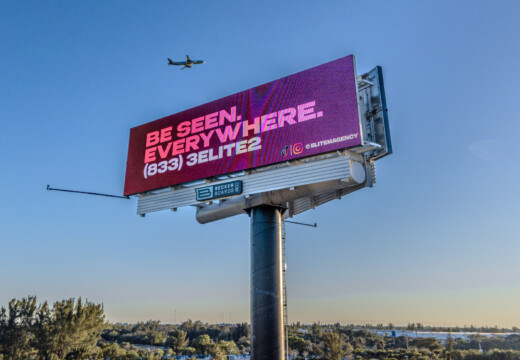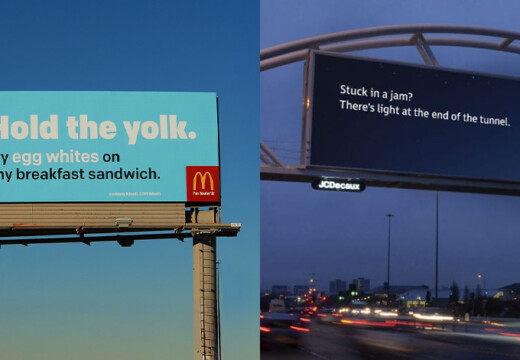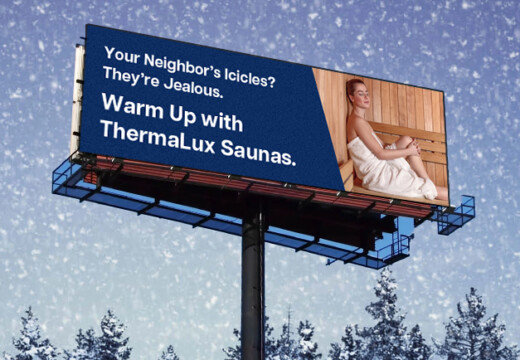
The Best Movie and TV Show Billboards
Have you noticed a billboard in your favorite movie? Check out our list of the best billboards featured in movies and television.
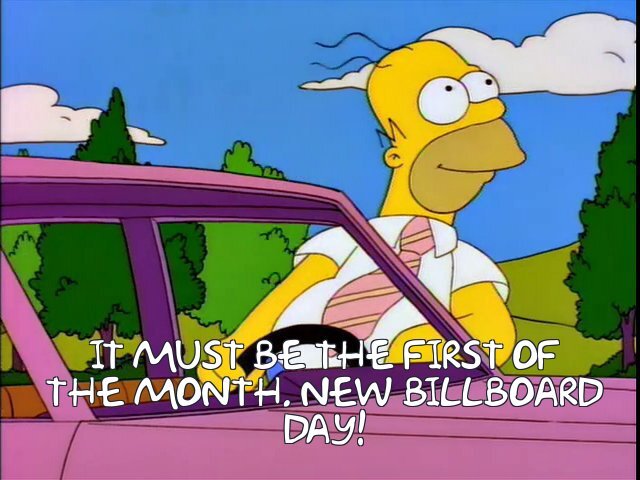
When people think of billboards, they think, “Oh, those things I see when I’m driving.”
But there’s one other place you’ve seen billboards – one place that puts this powerful advertising medium front and center and uses it to tell captivating stories that draw us in.
That’s on the screen: the big one at the movie theater and the small one at your house.
Billboards have made cameos throughout pop culture for about as long as they’ve both existed. You’ve probably spotted a few notable placements in your favorite flicks and shows.
Since we love billboards so much, we’re going to highlight some of our favorite fictional signage spots…and we bet they’ll look pretty familiar to you.
Back to the Future II
In the original Back to the Future, Marty McFly inadvertently travels to the 1950’s to help his parents fall in love for the first time (again).
In the sequel, Marty has to travel to 2015 to save his future son from trouble. That’s where he encounters the bright and shiny future for the first time – and that means holographic billboards (or “holobillboards”) that jump out at you.
He also encounters a sight that at the time seemed to really showcase how preposterous the future could be: a billboard congratulating the Chicago Cubs on finally winning the World Series for the first time since 1908.
(The movie wasn’t that far off; the Cubs would break their drought for real in 2016, just one year later.)
See if you can spot these futuristic ads in the clips below:
Back to the Future Part 2 (2/12) Movie CLIP – Hill Valley, 2015 (1989) HD
(Our digital billboards are pretty great, but they’re not capable of predicting sports events decades in the future. Yet.)
One more thing: did you know that the billboard in 1955 that showcases the “home of the future” in Hill Valley looks exactly like Marty’s home in 1985? Check it out.
Three Billboards Outside Ebbing, Missouri
Did you know they made an entire movie about billboard advertising?
Well, not exactly – but award-winning crime drama Three Billboards Outside Ebbing, Missouri does feature a familiar ad medium serving as the centerpiece of a heart-wrenching tale about murder and justice.
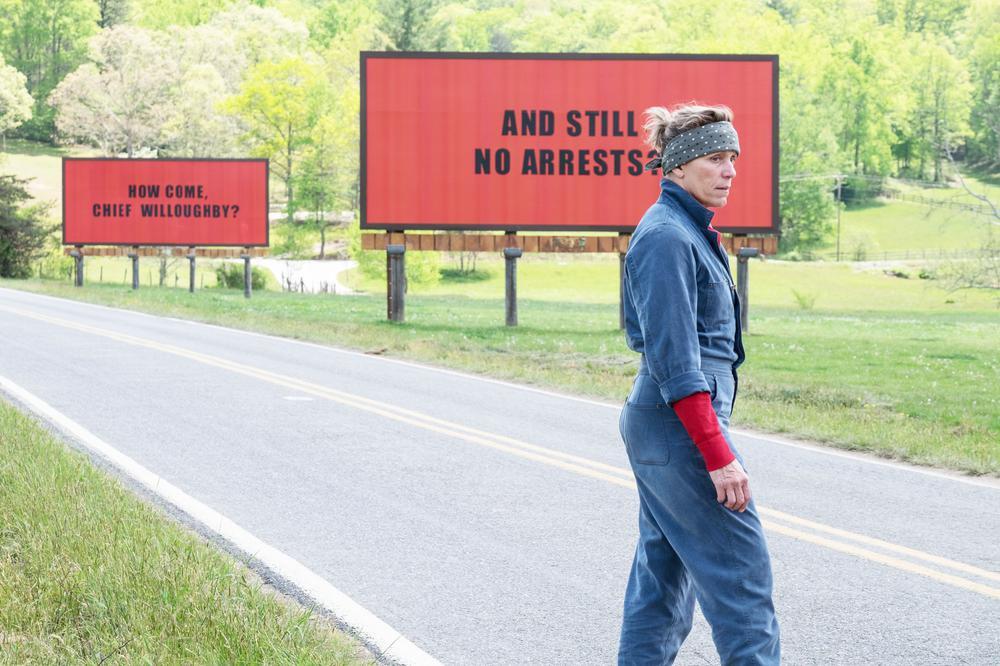
Billboards have never been exclusively about advertising products and services to consumers. As soon as they emerged onto the scene in the U.S., they were adopted by activists, community leaders, politicians, non-profits, and other people and organizations who recognized the power of the medium to influence the masses.
Billboards working so well is central to the premise of Three Billboards; the visuals are too powerful for the people of the town to ignore – thus causing a firestorm that drives the movie forward.
The Simpsons
It’s not quite the same as having an entire movie named after you, but in the long-running series The Simpsons, billboards did get an entire day.
In season 6, episode 15, Homer Simpson is driving down the road when he stops in front of a billboard. “It must be the first of the month – new billboard day!” It’s an ad for English muffins that’s soon followed by even more food-based billboards – and every time he stops in the road to see one, entranced, traffic shenanigans ensue.
New Billboard Day – The Simpsons
Homer does resist the siren call of one billboard (temporarily, at least). He dismisses a billboard advertising Krusty’s Clown College, saying disdainfully, “Clown College? You can’t eat that.” He buys everything else he sees, but says, “I’m not going to enroll in that Clown College, though. That advertisement had no effect on me whatsoever.”
Then Homer spends the rest of the day daydreaming about Clown College…and eventually enrolls.
Homer Simpsons Clown College Ad gets to Homer
Not even Homer J. Simpson himself is immune to the allure of a well-placed billboard.
Starting in season 9, “The Simpsons” also featured a running billboard gag with a new tongue-in-cheek reference every episode, similar to Bart’s infamous chalk-writing punishment. See how many you recognize.
Better Call Saul
Finally, anyone who has ever seen the smiling face of a lawyer gazing down at them from a prominently-displayed billboard will get a kick out of one clever billboard placement in hit TV show Better Call Saul.
In season 1, episode 4, the titular character of Saul Goodman – or Jimmy McGill in the show, as he was known before his Breaking Bad shuckster lawyer days – wants revenge on his older brother’s prestigious law firm for not hiring him.
So, when he launches his own solo practice, he puts up a billboard promoting his new venture. No problem there, right?
It’s just a coincidence that he stole the exact same design as his brother’s firm*, including replacing his legal adversary Howard Hamlin’s face with his own.
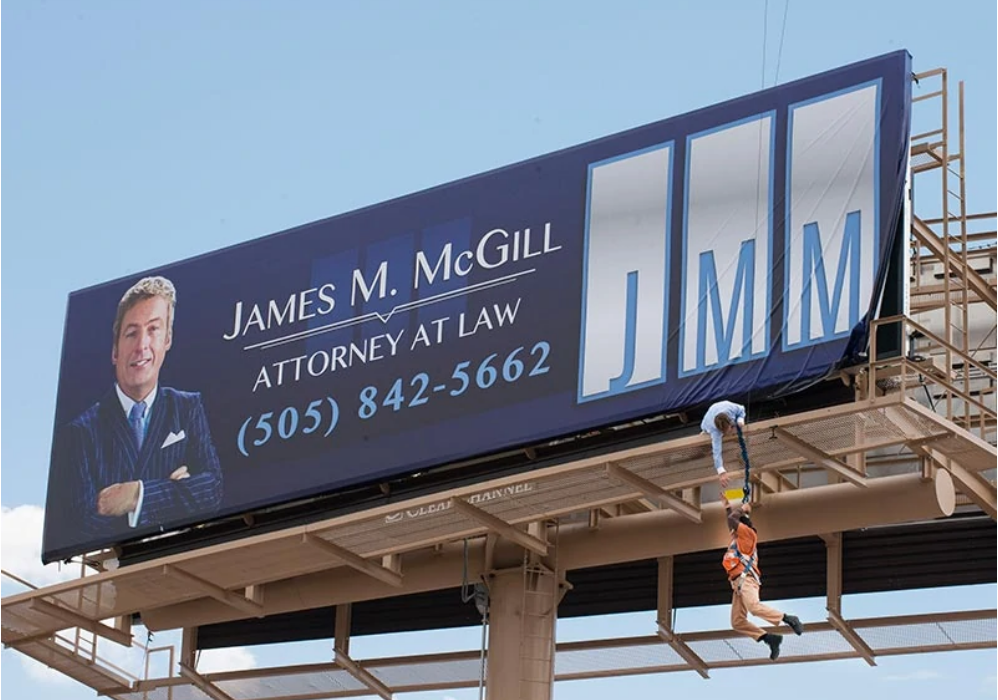
Jimmy’s brother’s firm isn’t pleased, as one could imagine, and Jimmy gets a cease-and-desist letter for his troubles. But hey, it worked; after a clever publicity stunt involving the billboard, Jimmy’s popularity soars.
(*Note: Please don’t do this. It’s very illegal.)
_____
All of these billboards were quite effective in their respective shows. People not only noticed them; they were intrigued and engaged by the message – and that’s not just a work of fiction.
According to one study from Arbitron, 71% of travelers notice billboards when they pass by. That’s the kind of affordable, widespread visibility other mediums just can’t touch.
Your Blip digital billboard may never appear in a movie or in a TV show, but that’s okay: it’ll get the job done just as well.
We’ll end with one more reference: a quote from hit TV series Mad Men and the larger-than-life Don Draper:
“Advertising is based on one thing: happiness. And do you know what happiness is? It’s a billboard on the side of the road that screams reassurance that whatever you’re doing is okay.”
Powerful words for a powerful platform. You can’t believe everything you see on TV, but you can believe that.
